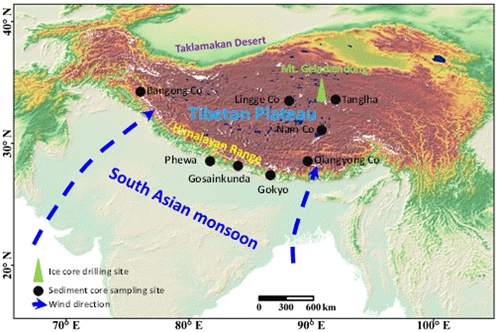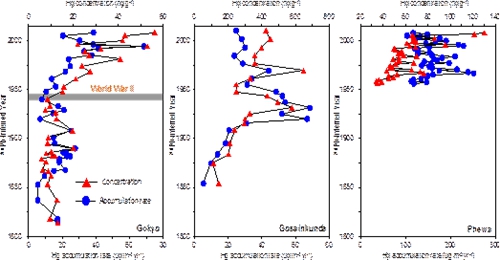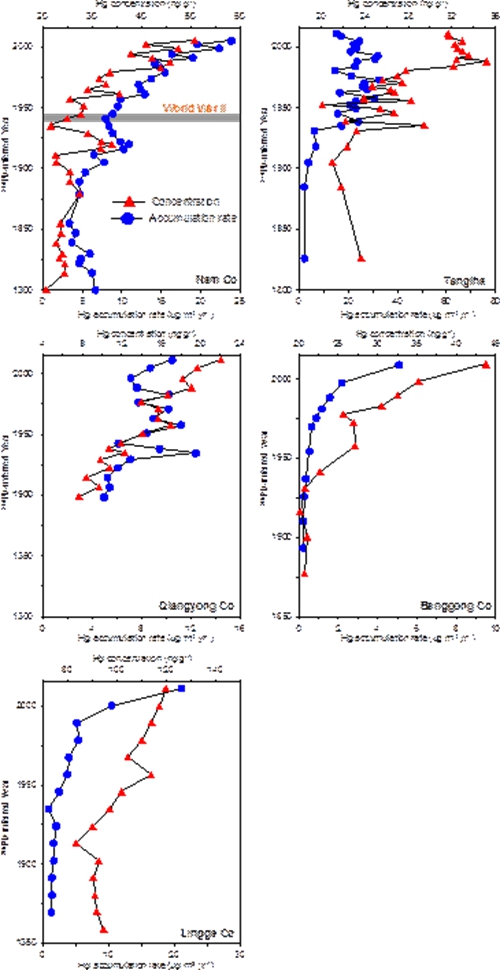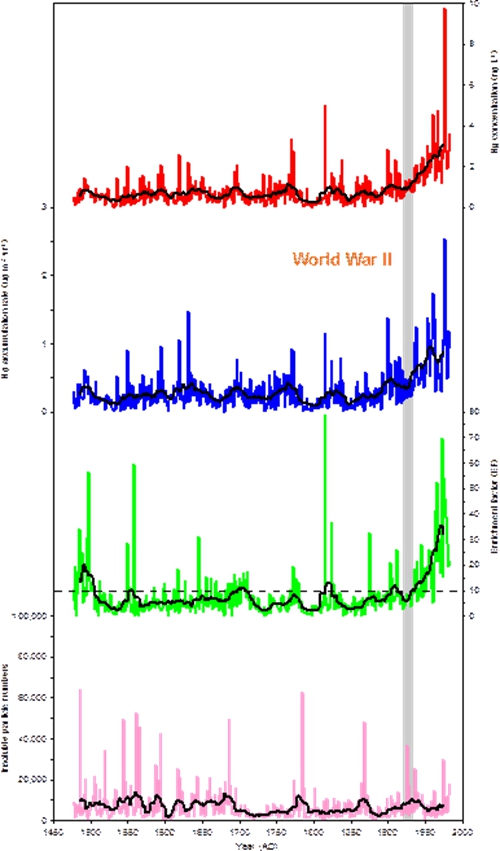Mercury (Hg) is a toxic heavy metal and a global pollutant with special physical and chemical properties. In recent decades, concern about Hg has grown to such an extent that the Minamata Convention on Hg called for action to reduce Hg contamination, aiming to limit its toxic impact on ecosystems and human health.
Known as the "Third Pole", the Himalayas and Tibetan Plateau (hereafter, the Himalaya-Tibet) is remote, isolated, and presumed to be a pristine region characterized by extremely high altitude and harsh climatic conditions. Alpine lake sediments and glacier ice cores retrieved from the Himalaya-Tibet are ideal for long-term reconstruction of atmospheric Hg deposition because they can provide high resolution, well-preserved, multi-parameter archives of the atmospheric signature. Consequently, reconstruction of the long-term history of atmospheric Hg deposition will not only enhance our knowledge of understanding the Hg biogeochemical cycling in the "Third pole", but also offer scientific basis for Chinese government to better fulfill the international Hg convention.
Recently, a research group led by prof. Shichang Kang from the State Key Laboratory of Cryosphere Science at Cold and Arid Regions Environmental Engineering Research Institute (CAREERI), Chinese Academy of Sciences (CAS) and CAS Center for Excellence in Tibetan Plateau Earth Sciences has reconstructed the history of atmospheric Hg deposition in the Himalaya-Tibet during the past 500 years using eight age-dated lake sediments and one glacier ice core. In particular, the Geladaindong ice core record has provided the longest, high resolution atmospheric Hg deposition chronology in High Asia, which is one of the numbered long-term ice core records worldwide.
As a result of trans-boundary air pollution, the sediment core records showed significantly higher Hg accumulation rates in the southern slopes of the Himalayas than those in the northern slopes in the recent decades (post-World War II), which was consistent with GEOS-Chem modeling results.
The Geladaindong ice core records showed that the atmospheric deposition of Hg during late 15th century to the onset of the Industrial Revolution was mainly driven by changes in dust-borne Hg deposition from natural sources. Both lake sediments and ice core records showed the consistency of atmospheric Hg deposition, indicating that the Hg deposition rate has increased at the onset of the Industrial Revolution, followed by a dramatic increase after World War II.
Unlike North America and Europe where most of Hg records showed that the trend of Hg accumulation rates in recent decades were either flat or decreasing, this research indicated that the Himalaya-Tibet has been suffering from anthropogenic Hg pollution via the trans-boundary transport of air pollution emitted from South Asia. The accumulation of trans-boundary pollution will most likely impact on ecosystems and human health in the Himalaya-Tibet, supposing that anthropogenic emissions of pollutants from South Asia can't be brought under control in the future. Therefore, further studies addressing the environmental impact of increasing pollutants loadings to the fragile ecosystems of the Himalaya-Tibet are urgently needed and the effectiveness of any Hg emission controls in South Asia is called upon by the recently signed Minamata Convention for Hg.
This research is published on Environmental Science & Technology (http://pubs.acs.org/doi/abs/10.1021/acs.est.5b04172).
Contact:
KANG Shichang
E-mail:shichang.kang@lzb.ac.cn
State Key Laboratory of Cryospheric Sciences, Cold and Arid Regions Environmental and Engineering Research Institute, Chinese Academy of Sciences

Fig. 1 Map showing the locations of sampling sites of lake sediment (black circles) and ice (green triangle) cores. (Image by KANG)

Fig. 2 Hg concentration and accumulation rate profiles of the sediment cores taken from the southern slopes of the Himalayas (Image by KANG)

Fig. 3 Hg concentration and accumulation rate profiles of the sediment cores taken from the northern slopes of the Himalayas (Image by KANG)

Fig. 4 Historical trends of concentration, accumulation rate, and enrichment factor (EF) of Hg and insoluble particle reconstructed from the Geladaindong ice core (Image by KANG)

